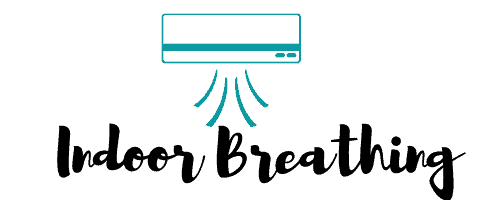Asthma is a chronic (long-term) lung illness involving the airways in the lungs. These airways, or bronchial tubes, let air in and out of the lungs.
Asthma causes periods of wheezing, chest tightness, shortness of breath, and coughing. Usually, the coughing occurs at nighttime or early in the morning. Sometimes asthma is named bronchial asthma or reactive airway disease.
Asthma affects people of all ages but most often begins during childhood. In 2013, 242 million people globally had asthma, up from 183 million in 1990. In the United States, more than 24 million people have asthma. About 6 million of these people are children.
Table of Contents
What Are Allergy Triggers?

When you are allergic or have asthma, you are sensitive to triggers containing particles in the air. These triggers can set off a reaction in your lungs and other parts of your body. Triggers can be found indoors or outdoors. Triggers can be things like:
- Cool air.
- Secondhand smoke and wood smoke.
- Fragrance, paints, hair spray, or any strong odors or fumes.
- Allergens include dust mites, pollen, molds, pollution, and pet dander.
- Common cold, influenza, and other respiratory diseases.
This list is not all triggers. Of course, there are other things as well that may also trigger your asthma or allergies. It is essential to know which triggers are problems for you. You may need help from your doctor.
He may suggest:
- I am having an asthma diary.
- Skin testing to test for allergies.
- A specific diet to watch for food allergies.
Finding triggers is quite tricky. But it is essential to know them.
While you don’t know the triggers, try to limit your exposure to one assumed trigger at a time. Then, watch to understand if you get better. This may tell you if the trigger was a problem for you.
Reducing Triggers in the Home.
Here are some typical triggers and some steps to help control them at home:
Healthy products

Bypass the foods you’re allergic to. The most common food allergens are gluten, eggs, milk, nuts, and soya.
The most popular food irritations that can trigger asthma symptoms are histamine (a commonly produced ingredient in several foods, yogurt, and smoked meats) and sulfites(used as preservatives in several foods, such as processed meats).
Instead, use beta carotene-rich vegetables, magnesium-rich foods, vitamin-A-containing food, apples, and bananas.
Use asthma-friendly spices, for example, curcumin. The latest research shows that curcumin can decrease signs of sneezing and nasal congestion.
Tobacco Smoke

Secondhand smoke can affect health in many ways, and asthma is one of them. Secondhand smoke can cause heart disease, lung cancer, worsening asthma, asthma-related problems, wheezing, coughing, bronchitis, and pneumonia. In addition, secondhand smoke quickly affects the heart, blood vessels, and blood circulation in a harmful way.
What can be done regarding secondhand smoke?
- Quit smoking if you are not already a non-smoker.
- Do not allow anyone to smoke anywhere in or near your home.
- If you can’t avoid smoke in your home (smoking neighbors) or at work (smoking colleagues), you can use an air purifier. It will help you to get rid of the smoke.
Wood Smoke
Wood smoke is a problem for children and adults with asthma and allergies. Avoid wood ovens and fireplaces.
Pets

Most pets can cause allergies, including dogs and cats, so all pets should be transported from the home if pets trigger asthma and allergy symptoms.
Pet allergens remain suspended in the air for a long time, longer than allergens from cockroaches or dust mites. As a result, animal dander is easily reached at home and in public places like schools and hospitals. They can be found even in homes and buildings without pets.
There is a possibility of keeping animals still. In that case, don’t let them into a bedroom. Do not allow the pet on furniture, and keep the pet away from carpets. Better don’t use them at all.
Regular cleaning also will help you. Keep your floors fresh. Use a vacuum cleaner with a HEPA filter to reduce lead concentrations in your home and get rid of pet dander.
Keep a healthy level of humidity. Keep humidity between 30 to 50 percent to keep pet dander and other allergens under control.
Indoor Mold

Molds produce irritating substances that can act as allergy-causing elements (allergens) in sensitive persons. In addition, some molds create toxic substances known as mycotoxins, but mold itself is not dangerous or toxic.
Therefore, the mold may not generate any health impacts or lead to symptoms in people who are sensitive to mold.
The best way to control mold growth is to control moisture. Unfortunately, it is impossible to defeat all mold spores; they will not increase in the absence of moisture, so controlling moisture is the solution to limiting mold growth.
Here are some tips presented to help you clean up your mold problem:
- Clean mold off hard surfaces with detergent and water and dry thoroughly.
- Having fans and maintaining ventilation in the home can also help limit or regulate dampness.
- Use a dehumidifier during humid seasons to keep humidity between 30 to 50 percent.
Strong Odors or Fumes
Fragrance, room deodorizers, cleaning chemicals, paint, and talc powder are triggers that must be avoided or managed to shallow levels.
Dust Mites
Dust mites (also called bed mites) is cosmopolitan pyroglyphid that lives in human habitation. These microscopic arachnids are one of the main allergy offenders for people with allergic asthma.
The sad news is that dust mites cannot be eliminated no matter how clean a home is. But, the number of dust mites can be decreased significantly if you do your homework.
- Minimize household humidity. To do that, use a dehumidifier to keep relative humidity between 30 to 50 percent.
- Remove wall-to-wall carpets, especially in the bedroom: better use bare floors – linoleum, tile, or wood.
- Use mattresses and pillows in dust-proof or allergen-impermeable covers. Also, wash all bedding and blankets often in hot water.
- Keep pets out of the bedroom and preferably out of the house.
Pollen

Pollen is an airborne allergen picked up and moved by the wind, birds, insects, or other animals.
Pollen is one of the several common allergens in the United States. Over 67 million people suffer from allergies; of those 67 million, 81% say they are allergic to pollen.
To keep pollen outside, switch clothes and shoes immediately after returning indoors. Wash pets when they enter, too, as their fur and paws quickly track pollen into the house.
Also, during the pollen season, keep your doors and windows closed. Regularly clean carpets and surfaces, and we also recommend using a HEPA air purifier – it will remove pollen from your indoor environment.
Volatile Organic Compounds
Volatile organic compounds (VOCs) are vapor pollutants and chemicals that can evaporate. VOCs are found in building materials, paints, glues, pesticides, solvents, and cleaners. For example, formaldehyde discovered in building materials is a VOC.
- Avoid storing solvents.
- Store container covers tightly.
- Read marks on containers. I prefer water-based products and non-aerosol products if choices are possible.
- Choose unscented products.
- Keep VOCs collected in a detached storage unit or area whenever possible.
Other Potential Asthma Triggers
There are also several other asthma triggers. Personal care products and scents can be triggers for some. Ozone is a lung irritant and may worsen asthma. It raises the risk of severe respiratory effects – especially in children.
People with asthma should work with their doctors and healthcare professionals to discover specific pollutants that trigger asthma, overcome the triggers, and control their asthma.
Summary
Many indoor air pollutants can trigger asthma attacks. It is practically unreal to eliminate all triggers.
The methods are preferred to decrease or eliminate triggers depending on the pollutant source, the number of asthma triggers for that individual, medical support, and utility control. Tips for handling pollutants in order of effectiveness include:
After medical recommendations:
- Recognize and reduce the contaminant at the source.
- Ventilate – mix or dilute pollutants with pure outside air and exhaust pollutants.
- Apply air cleaners after source control and ventilation. Decide air cleaners by the type and percentage of air particles eliminated and the amount of air filtered during a specific time period. Air cleaners are usually not designed to remove gasses, but some with charcoal will help.


